Sling Weapon
Sling Weapon
Yes, I know, the sling weapon is not a bow and arrow. Yet we decided to delve into the subject matter for several reasons. The sling, like the bow and arrow, is an ancient device, coming to us from the dawn of history. It has been used for hunting and combat the world over. There are reliefs, written records, and other artifacts depicting the sling weapon and its use from many ancient people including:
- Egyptian reliefs and grave goods (the tomb of Tutenkamun contained two finely made slings)
- Assyrian reliefs
- Roman columns (Trajan, Marcus Aurelius)
- The Bible (the famous battle between David and Goliath from the First Book of Samuel 17:34–36)
- Greek writings (mentioned as early as in the writings of Homer [1]
- Stabo and other Greek historians, namely Diodorus mention the sling weapon’s use among several people including [2]:
As you can see, the sling weapon is a gateway into the history of the people of the world. This article explores all aspects of the sling, from its history to its construction, physics, and mechanics. Enjoy.

History of the Sling Weapon
The sling is one of the oldest projectile weapons in human history, with a history dating back to prehistoric times. It is a simple weapon consisting of a strap or string, which is used to hurl a projectile at a target. The use of slings as weapons for hunting and warfare was widespread in many cultures throughout history, and it was particularly popular among the ancient Assyrians then the later Greeks and Romans as well as Rome’s archrival Carthage.
The Sling Weapon in Archeology
Although the sling’s history is concentrated on its utility in the Old World, some of the earliest archeological evidence comes to us from Peru. [4] What is even more intriguing is that the construction and use of slings persist in Peru to this very day. That’s correct! Every January 20th, the towns of Canas Province near Cusco, Peru engage in a mock sling battle, as well as other festivities. We say “mock” battle as it is not an actual military engagement, yet the slings and projectiles are very real. Some are seriously injured or even killed. For more on this event you may visit the article here.
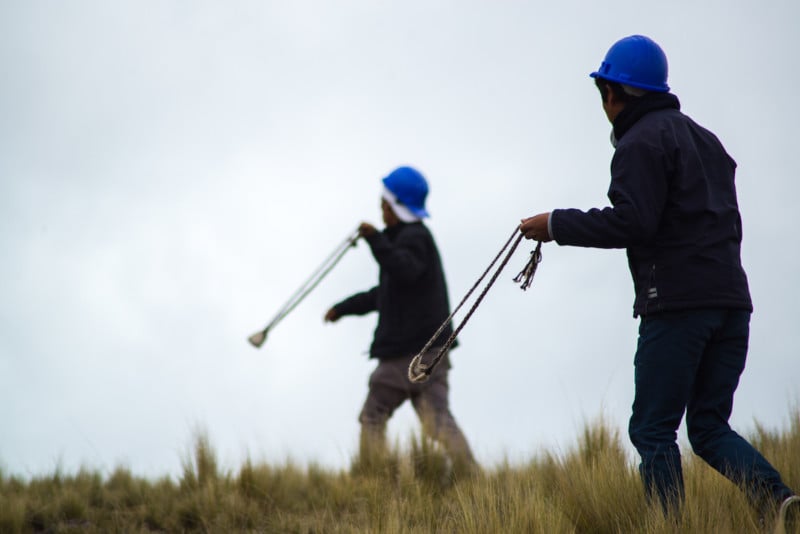
The earliest slings discovered in Peru, radiocarbon dated to around 2500 BC, were made of various materials commonly found in the region during that time period. These slings were typically made from natural fibers, such as plant materials or animal sinew, which were twisted together to create a durable and flexible cord. The cord was then attached to a pouch, which held the projectile, and often featured a loop or handle for the sling user to hold onto.
The pouch of these early Peruvian slings was often made from animal hides, such as those from llamas, which were commonly available in the region. The hides were carefully prepared and shaped into a pouch, which was then attached to the cord. Sometimes, the pouch was reinforced with additional layers of hide or other materials to provide extra strength and durability.
Sling Braiding
In addition to natural fibers and animal hides, other materials such as cotton, reeds, and other locally available resources may have also been used to make slings in ancient Peru. The exact materials used may have varied depending on the region, local resources, and the preferences and techniques of the sling makers at that time.
Traditional Peruvian clothing is known for its fine craftsmanship and vibrant color. The braiding of the sling is also quite lovely. You may read more about this traditional craft in the following articles:
These early slings from Peru represent some of the oldest surviving examples of sling use in human history, providing valuable insights into the ancient technology and culture of the region. They are important archaeological finds that shed light on the early history of slings as weapons and tools for hunting and warfare.

The Oldest Old-World Sling Weapon
The oldest known Old-World sling comes to us from Egypt, specifically the tomb of the Boy King Tutankhamun. He died c. 1325 BC and the sling is thought to be around this old.
The sling found in Tutankhamun’s tomb was made of finely woven linen, a common material used for slings during ancient Egyptian times. The linen was carefully crafted and skillfully woven to create a strong and durable cord, which was attached to a pouch made of the same linen material. The pouch was designed to hold the projectile, typically a stone or a small lead ball, which would be launched from the sling.
The sling found in Tutankhamun’s tomb is believed to have been a treasured possession of the young pharaoh, as it was buried with him in his tomb. The exact significance of the sling being buried with Tutankhamun is not entirely clear, as ancient Egyptian burial customs and practices can vary. However, it is believed that the sling may have held ceremonial or symbolic importance, possibly representing Tutankhamun’s status as a warrior or hunter in the afterlife.
The Widespread Popularity of the Sling Weapon
In ancient times, the sling was a popular weapon among shepherds, hunters, and warriors. The sling was cheap to make and easy to use, and it was effective at a relatively long range. The ancient Greeks and Romans used slings in warfare, and it was an important part of their military arsenal. The Romans even had specialized slingers in their army, called funditores.
The sling was also a weapon of choice for many of the ancient Hebrews, who used it in warfare and hunting. In the Bible, the sling is famously associated with the story of David and Goliath, where David, a young shepherd boy, defeats the giant Goliath with a single stone from his sling.
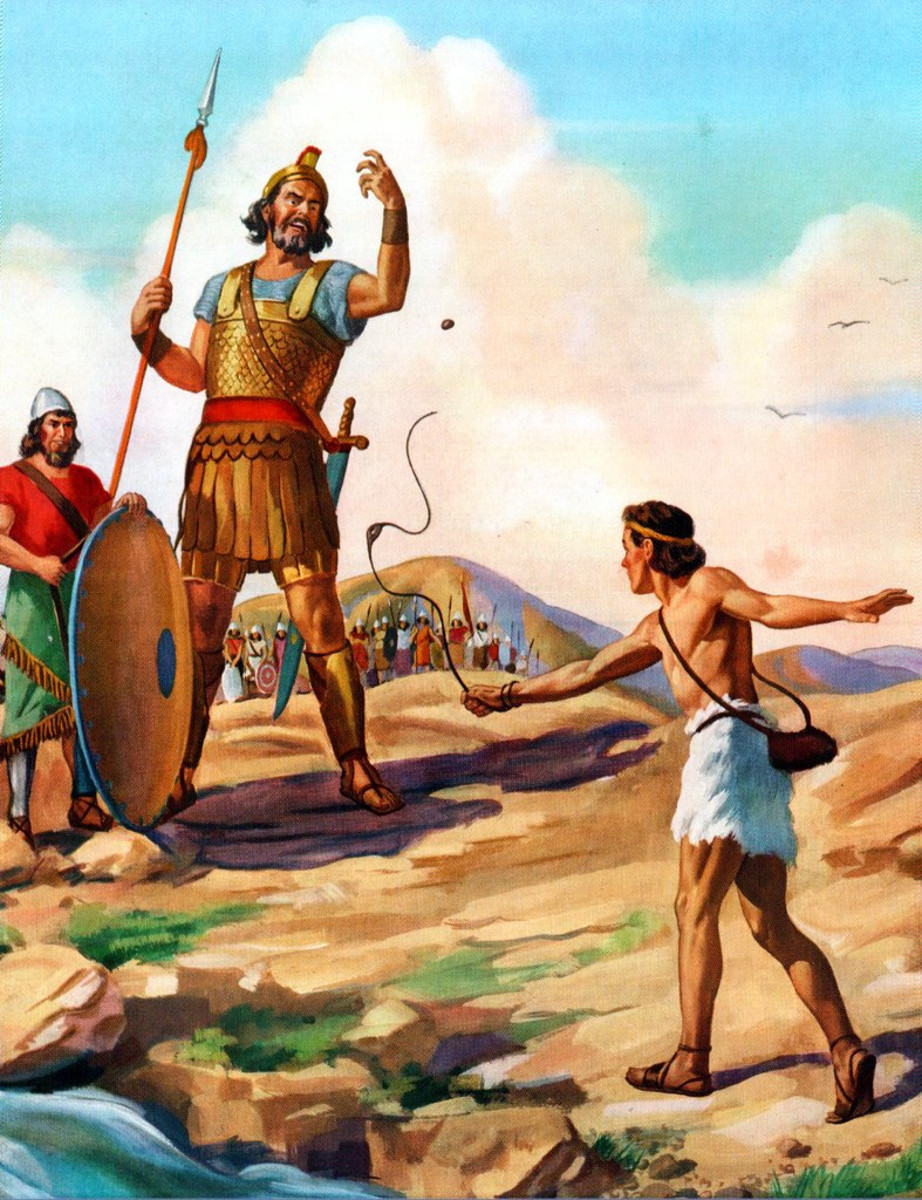
Over time, the sling evolved into different forms, including the staff sling, which was a longer version of the simple sling, and the Roman-style sling, which was made of a pouch attached to two cords. The Roman-style sling was used for both hunting and warfare, and it was known for its accuracy and power.
During the medieval period, the sling lost its popularity as a weapon of war, as other more sophisticated weapons, such as the longbow and crossbow, became more prevalent. However, it continued to be used as a hunting weapon in some regions of the world, such as the Balearic Islands in Spain.
Today, the sling is mainly used as a recreational weapon and as a sport. There are many sling shooting competitions held around the world, and the sling remains a popular pastime for enthusiasts of all ages. In recent years, the sling has also gained attention as a survival tool, as it is lightweight, easy to make, and can be used to hunt small game in a survival situation.
The Sling Weapon and the Assyrians
Sling usage and evolution in the ancient world were most prominent in the Mediterranean and Near East. Some of the earliest recordings of sling weapon usage come to us via the Assyrians. Although archers were always given more prominence and reverence in ancient Assyrian military affairs, they used slingers to great effect in war. The slingers would be used in the initial phases of battle to harass and soften the enemy, both physically and in terms of morale. This strategy of using slingers as the opening act of battle and as ranged harassment would be repeated throughout history. The slingers and well as other ranged units are known in historical military jargon as skirmishers. The Assyrians also used slingers in siege warfare, hurling projectiles over city walls.
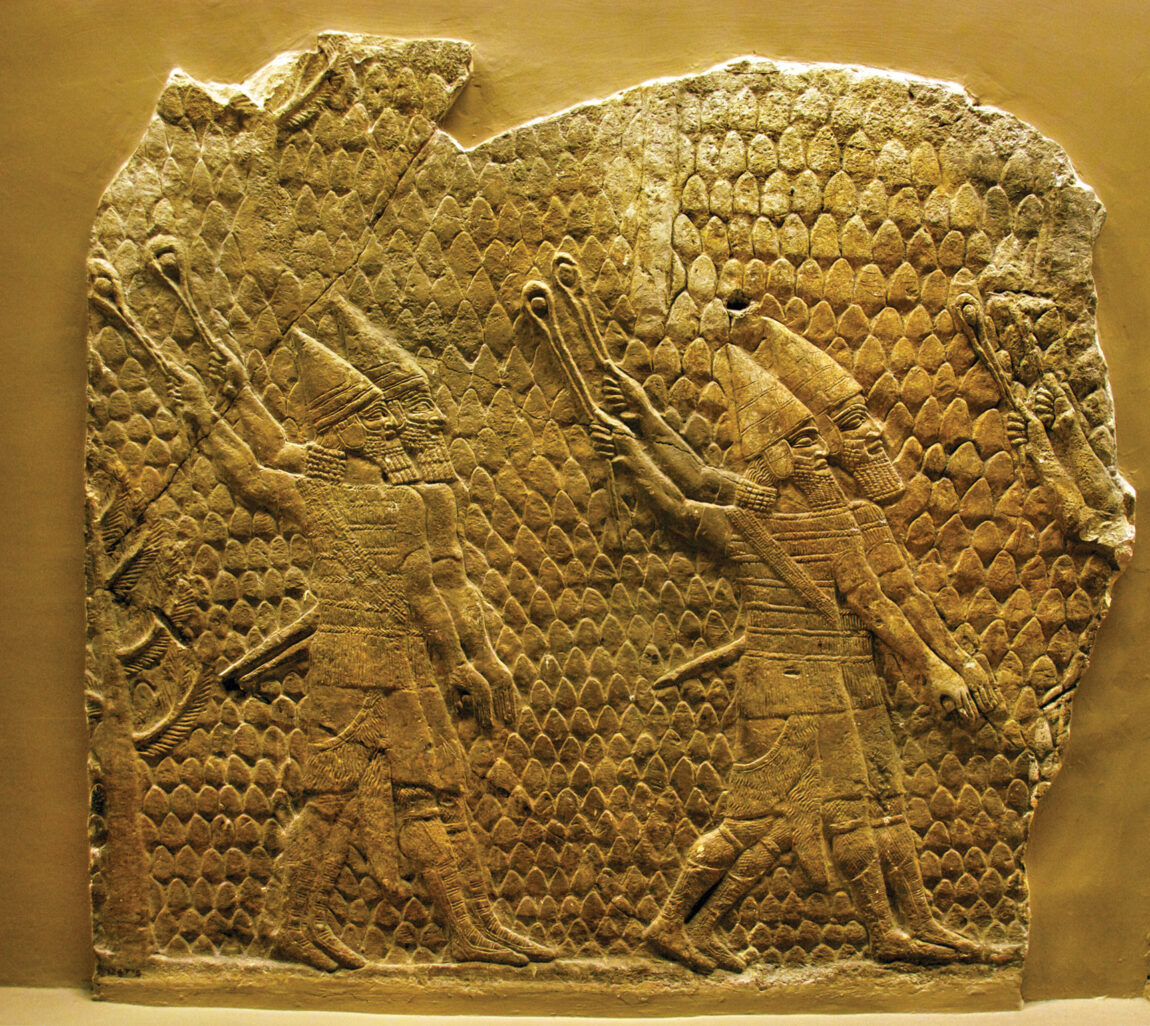
The Siege of the Judean City of Lachish
The siege of the Judean city of Lachish by the Assyrians is a historically significant event that sheds light on the strategic use of slingers in ancient warfare. Lachish, located in present-day Israel, was a prominent city and a key fortress during the late Bronze Age and Iron Age periods.
The Assyrians deployed slingers in the siege of Lachish to weaken the defenses of the city. The slingers would position themselves at a safe distance from the walls of the city and use their slings to launch projectiles at the defenders on the walls. The speed and accuracy of the sling projectiles allowed the Assyrians to strike at the defenders from a distance, inflicting casualties and creating fear and disruption among the defenders.

The use of slingers in the siege of Lachish was an effective tactic for the Assyrians. The defenders of Lachish struggled to counter the precision and range of the sling projectiles, and the city’s walls were eventually breached by the Assyrians. The slingers were able to keep the defenders pinned down while heavy siege equipment was brought up to the walls. The siege of Lachish is documented in Assyrian reliefs and inscriptions, which depict the use of slingers alongside other siege engines and infantry in the Assyrian military campaigns.
The strategic use of slingers by the Assyrians in the siege of Lachish highlights the importance of ranged weapons in ancient warfare. Slings were versatile and effective weapons that could be used to target enemies from a distance, providing a tactical advantage in sieges and battles. The use of slingers by the Assyrians at Lachish is a significant historical example of the skillful use of sling weapons in ancient warfare, showcasing the ingenuity and sophistication of ancient military tactics.
The Ancient Greeks and the Sling Weapon
Sling usage among the ancient Greeks was well documented in historical and literary sources. The ancient Greek historian Polybius, writing in the second century BCE, described the use of slings as a common weapon in ancient Greece. He noted that slingers were often used as skirmishers or in support of heavier infantry units and that they could rain down a hail of stones on their opponents from a safe distance.
According to Polybius, the Greeks learned the use of slings from the ancient Phoenicians, who were renowned for their skill with the weapon. The Greeks eventually developed their own unique style of slinging, which involved a larger, heavier projectile that could do more damage to the enemy.
Slingers were typically recruited from among the poorer classes of society, as the weapon required little in the way of equipment or training. However, they were highly valued for their ability to disrupt enemy formations and inflict casualties from a distance.
In addition to their use in warfare, slings were also used in hunting and sport. The famous philosopher Plato was said to have been an avid slinger, and he wrote about the skill required to hit a target with a sling in his dialogues.
Overall, the use of slings among the ancient Greeks was an important part of their military and cultural history, and it had a significant impact on their society and way of life.
The Slingers of Rhodes
The slingers from Rhodes were renowned for their skill and expertise in using slings as weapons in ancient Greek warfare. Rhodes, an island in the Aegean Sea, was known for producing highly skilled slingers who were valued for their strategic capabilities in battle.
The ancient Greek city of Rhodes had a long tradition of producing skilled slingers who were highly regarded for their marksmanship and accuracy with slings. The Rhodian slingers were known to be proficient in both offensive and defensive roles on the battlefield. They were trained in the use of slings from a young age and were considered among the best slingers in the ancient Greek world.
In ancient Greek warfare, slingers played a crucial role in both battles and sieges. They were typically deployed as part of the light infantry or skirmishers and were known for their ability to launch projectiles with great accuracy and force from a distance. Slingers were effective against infantry, cavalry, and even armored opponents, as their projectiles could cause injuries and disrupt enemy formations.
The slingers from Rhodes were particularly renowned for their ability to accurately target enemy troops from a distance, making them a valuable asset on the battlefield. Their skill with slings allowed them to strike at enemy soldiers and commanders, disrupting their formations and causing casualties. They were also adept at providing cover fire for other troops or protecting their own troops from enemy projectiles.
Rhodian Mercenaries
The importance of Rhodian slingers in ancient Greek warfare is highlighted in historical accounts and military treatises of the time. Their precision and effectiveness with slings made them a formidable force on the battlefield, and they were highly sought after as mercenaries by various Greek states and other powers in the region.
The skill and reputation of Rhodian slingers in ancient Greek warfare can be attributed to their extensive training and practice in the use of slings, as well as the availability of suitable materials for making high-quality slings. The island of Rhodes was known for its abundance of high-quality slinging stones, which were carefully selected and prepared for use in slings. They also used lead projectiles, which were exceptionally dense and heavy, imparting great kinetic energy upon impact.
The expertise of the slingers from Rhodes played a significant role in ancient Greek warfare, contributing to the success of various military campaigns and battles. Their proficiency in using slings as weapons, combined with their strategic capabilities, made them a formidable force on the battlefield and earned them a reputation as elite soldiers in the ancient Greek world.
The Sling Weapon and the Romans
Sling usage among the Romans was also well documented in historical and literary sources. The Roman army used slingers as auxiliaries and skirmishers, who would rain down stones on the enemy from a distance before the main battle commenced. Slingers were often recruited from the Balearic Islands, which were renowned for their skilled slingers.
Roman slingers used a smaller, lighter projectile than the Greeks, which allowed them to fire more rapidly and accurately. They were also trained to use their slings in combination with other weapons, such as javelins or arrows, to create a devastating barrage of projectiles.
In addition to their use in warfare, slings were also used in hunting and sport among the Romans. The famous Roman poet Virgil wrote about the skill required to hit a moving target with a sling in his epic poem, the Aeneid.

The Romans also developed a unique form of sling known as the fustibalus, which was essentially a hand-held sling that could be used with one hand. This weapon was highly effective in urban combat, where its mobility and accuracy allowed soldiers to hit targets from behind cover or from rooftops.
Overall, the use of slings among the Romans was an important part of their military strategy and cultural history. Their skilled slingers were a formidable force on the battlefield and contributed to the success of the Roman army in many conflicts throughout history.
Balearic Slingers – Masters of the Skermish
Mastery of the sling requires long and intensive training. Compared to other weapons, even long-ranged ones like the bow, slingers generally require a longer time to master their weapon. A certain social and cultural element seems to be the main reason that archers were recruited from certain groups or nations. This is why most slingers were recruited as mercenaries from these cultures, and could not be home-grown. To a large extent, Carthage’s go-to slingers were from the Balearic Islands. They are a small group of islands in the Mediterranean just East of Spain.
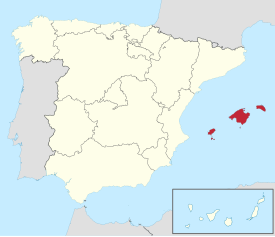
The Balearic slingers epitomize the harsh and extensive training required for sling mastery. There is a popular historical anecdote that suggests Balearic slingers were trained by their parents using a unique method involving a pole and bread. According to the story, parents would place a piece of bread on a pole and not allow their children to eat until they successfully shot it down with their slings. While this anecdote is often mentioned in discussions about Balearic slingers, there is limited concrete evidence to confirm its accuracy.
It is likely that various methods of training were employed, but the specific practice of shooting bread from a pole may be a romanticized or exaggerated account. Nonetheless, it is clear that the Balearic slingers underwent rigorous training from a young age, honing their skills through practice and instruction from their parents or other experienced slingers. This intensive training helped them develop remarkable accuracy and precision with the sling, making them formidable warriors in ancient warfare. The Balearic slingers were known to carry and shoot both lead and lighter stone projectiles. Using slings of varying lengths, they were also competent at hitting targets at different distances. Spare slings were sometimes conveniently tied on the slinger as a headband or waistband.

Doing Hannibal’s Dirty Work
As mentioned, Rome’s great enemy, Carthage, and her famed general Hannibal extensively recruited Balearic slingers. This was done most extensively throughout the 5th and 4th centuries BC. As Hannibal set off for his invasion of Italy in the Second Punic War, he employed over 1000 Balearic slingers which he used to great effect, most notably in the Battle of Trebia in 218 B.C.
At the Battle of Trebia in 218 B.C., Hannibal utilized his Balearic slingers to great effect. These skilled projectile troops, numbering more than 1,000, were among the first Carthaginian warriors to confront the Romans. Their task was to disrupt the front lines before Hannibal led the rest of his army to a decisive victory.

Hannibal understood the importance of ranged weapons in warfare and specifically chose the Balearic slingers for their exceptional skill with the sling. The slingers were able to launch small stones with great accuracy and force, inflicting significant damage on the Roman army. In fact, the Balearic slingers were so effective that they were said to be able to hit a target as small as a coin from a distance of 200 yards.
During the battle, Hannibal positioned his slingers at the front of his army to weaken the Roman infantry before they could even engage in hand-to-hand combat. The slingers pelted the Roman ranks with stones, causing confusion and breaking their formation. This allowed Hannibal’s infantry and cavalry to charge in and exploit the disarray.
The Balearic slingers continued to play a significant role in Hannibal’s campaigns, using their skill with the sling to support his army in many battles. Their success at Trebia was a testament to their training and ability, and they would go on to become feared and respected warriors in the ancient world.
Battle of Cannae
Another crushing defeat for the Romans came at the Battle of Cannae.
The Battle of Cannae was a major battle of the Second Punic War fought on August 2, 216 BC, between the Roman Republic and the Carthaginian army led by Hannibal. Hannibal’s army consisted of troops from various regions, including North Africa, Spain, and Italy, as well as a significant number of Balearic slingers.
Hannibal’s use of the Balearic slingers at Cannae was a critical part of his strategy. At the start of the battle, Hannibal deployed his slingers on the flanks of his army, where they pelted the Roman soldiers with stones and other projectiles. The Balearic slingers were highly skilled and able to launch their stones with incredible accuracy and force, inflicting heavy casualties on the Roman soldiers.

Hannibal also used his slingers to disrupt the Roman cavalry. The Roman cavalry charged the Carthaginian lines, but the Balearic slingers were able to cause chaos and confusion by hitting the horses and riders with stones, causing them to panic and scatter.
The Balearic slingers played a significant role in the Carthaginian victory at Cannae. Hannibal’s use of the slingers helped to weaken the Roman army and disrupt their formation, making it easier for the Carthaginian troops to overwhelm them. It is estimated that the Balearic slingers alone were responsible for killing or wounding over 6,000 Roman soldiers during the battle.
Decline of Carthage
The power of Carthage eventually waned after the battle of Zama was fought in 202 BC in modern Tunisia. Though outnumbering the Romans as well as having 80 war elephants, Carthage was soundly defeated and never regained its former power, which at one time was a real threat to the might of Rome.
After this decline, the Balearic slingers fought for Rome. A notable occasion of Balearic recruitment was that of Julius Cesar in his campaign in Gaul. He encountered Celtic slingers there and the Balearic slingers were brought in to counter them.
The Hebrews and the Sling
Sling use among the ancient Hebrews is also well documented in historical and biblical sources. The use of the sling is mentioned in the Hebrew Bible, where it is described as a weapon used by shepherds to protect their flocks and soldiers in battle.
One of the most famous examples of sling use in Hebrew history is the story of David and Goliath. According to the biblical account, the young shepherd David defeated the giant Philistine warrior Goliath with a single stone from his sling. This story has become a symbol of the power of the underdog and the importance of skill and bravery in battle.
In addition to its use in battle, the sling was also used for hunting and sport among the ancient Hebrews. In fact, sling stones have been found at several archaeological sites in Israel, indicating that the sling was a common tool for everyday use.

The ancient Hebrews also developed a unique form of sling known as the shebetayim, which consisted of two cords connected to a leather pouch. This design allowed for greater accuracy and range and was particularly effective against larger and more heavily armored opponents.
Overall, the use of the sling among the ancient Hebrews was an important part of their cultural and military history and continues to be celebrated in both religious and secular contexts today.
Archeology, Hebrews & The Sling Weapon
Some of the archaeological sites in Israel where sling stones have been found include:
- Tel Azekah: This ancient city, located in the Judean foothills, was the site of a major battle between the Israelites and the Philistines in the 10th century BCE. Sling stones have been found here, along with other weapons and artifacts.
- Tel Gezer: This ancient Canaanite and Israelite city was an important center of trade and commerce in the ancient Near East. Sling stones have been found here dating back to the Iron Age, along with other artifacts and structures.
- Tel Lachish: This fortified city in southern Israel was an important center of power and influence during the Iron Age. Sling stones and other weapons have been found here, along with evidence of a major battle that took place in the late 8th century BCE.
- Tel Megiddo: This ancient city was a major hub of trade and commerce in the ancient Near East, and was the site of several major battles throughout history. Sling stones have been found here dating back to the Bronze Age, along with other artifacts and structures.
- Maresha: This ancient city in southern Israel was an important center of commerce and agriculture in the Hellenistic and Roman periods. Sling stones and other weapons have been found here, along with evidence of a major siege that took place in the 2nd century BCE.
These sites, along with many others throughout Israel, offer important insights into the use of the sling and other weapons in ancient times.

Hebrew Sling Artifacts in Museums
Here are some examples of Hebrew sling-related archaeological finds and where they are currently kept:
- Sling stones from the site of Tel Gezer are kept at the Rockefeller Museum in Jerusalem and the Israel Museum in Jerusalem.
- Sling bullets from the siege of Lachish are kept at the British Museum in London and the Israel Museum in Jerusalem.
- Sling bullets from the site of Maresha are kept at the Israel Museum in Jerusalem.
- Sling stones from the site of Tel Azekah are kept at the Oriental Institute Museum at the University of Chicago.
- Sling bullets from the site of Khirbet Qeiyafa are kept at the Israel Antiquities Authority in Jerusalem.
It’s important to note that not all sling-related archaeological finds are on public display and some may only be available for research purposes.
David & Goliath
The story of David and Goliath is one of the most well-known tales from the Bible, found in the Old Testament book of 1 Samuel. The story takes place during the period of the Israelite monarchy, around 1000 BCE. The Israelites were at war with the Philistines, and the two armies had gathered for battle in the Valley of Elah. The Philistines had a champion warrior named Goliath, who was over nine feet tall and had an imposing presence. Goliath challenged the Israelites to send out their own champion to fight him, with the outcome of the battle to be determined by the result of their individual combat.
David, a young shepherd boy who was serving in the Israelite army, volunteered to fight Goliath. King Saul, the leader of the Israelites, was hesitant to allow David to fight Goliath, but eventually agreed. David refused to wear armor or use traditional weapons, instead choosing to fight with a sling and five smooth stones.
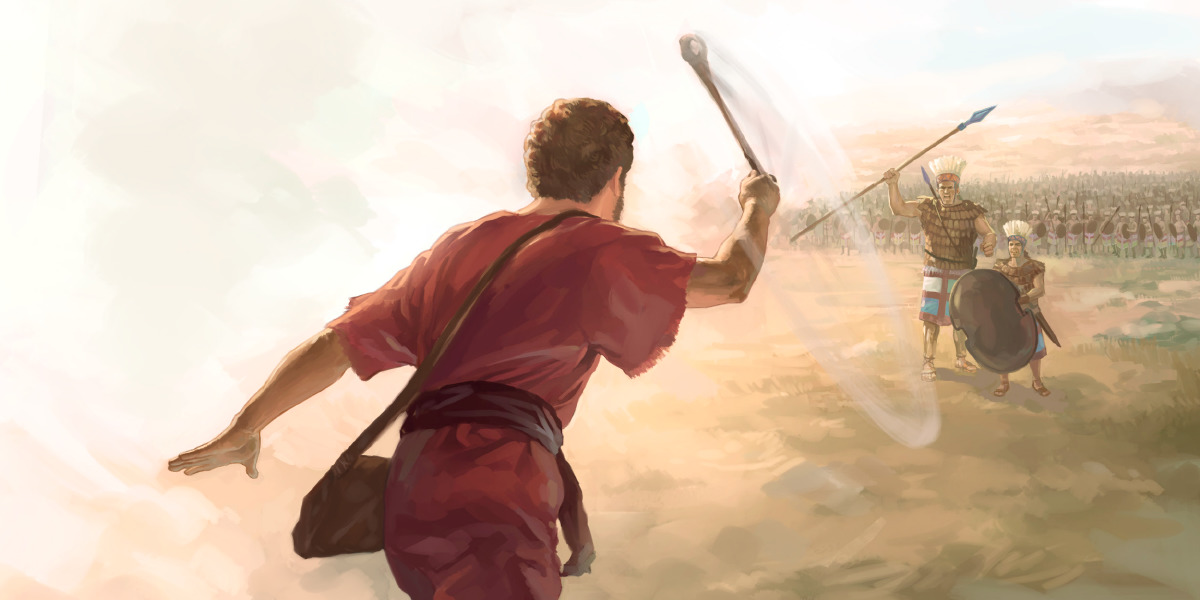
David Hits the Spot
1 Samuel 17:49-50 describes the confrontation between David and Goliath: “And David put his hand in his bag, and took thence a stone, and slang it, and smote the Philistine in his forehead, that the stone sunk into his forehead; and he fell upon his face to the earth. So David prevailed over the Philistine with a sling and with a stone, and smote the Philistine, and slew him; but there was no sword in the hand of David.”
David’s use of the sling in the story of David and Goliath is a powerful symbol of his faith in God and his resourcefulness. The sling was a common weapon in ancient times, used by shepherds to protect their flocks and by soldiers in battle. The accuracy and power of a skilled slinger were formidable, and it was considered a valuable skill in warfare.
The story of David and Goliath has inspired countless works of art and literature and has become a symbol of the power of faith, courage, and determination. It also serves as a reminder that even the smallest and seemingly weakest among us can overcome great challenges and accomplish great things.
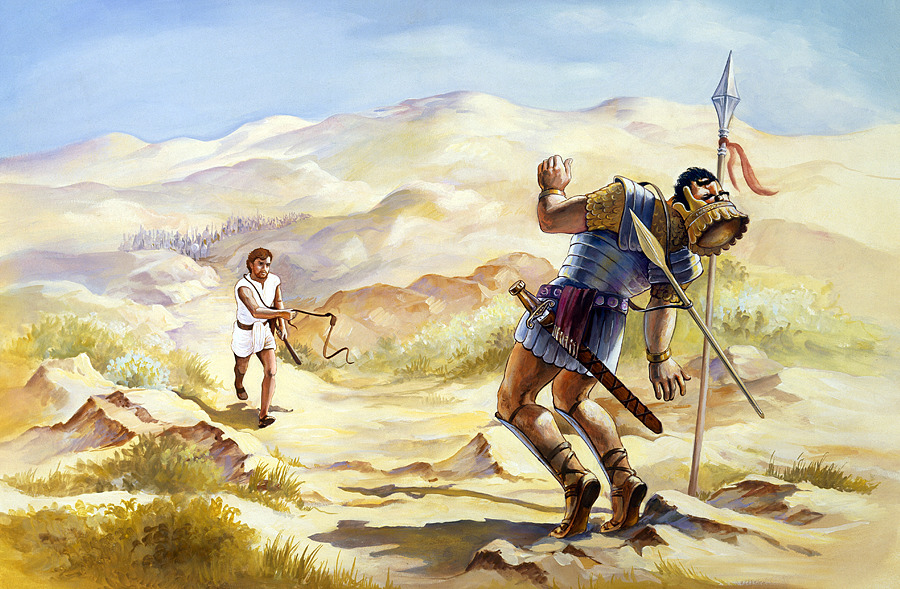
Sling Weapon Projectiles
Sling projectiles vary greatly in construction, size, and shape. Some are small pebbles weighing no more than 50 grams (1.8 oz) to fist-sized stones massing 500 grams (18 oz) or more. [5]
The first type of ammunition for slings was rocks. The rounder and smoother the better. The one major problem with rocks is that they are not all the same size and shape. This can greatly alter slinging performance. The speed, distance, and trajectory of the projectiles can differ by a large degree depending on the difference in the projectile.
One simple way to mitigate this is to cast a projectile from a mold. This would result in a much more uniform end product. The slinger can now make his shots with confidence, knowing the projectile he is about to fire is nearly identical to the previous one he shot. Greater accuracy would hopefully be the end result.
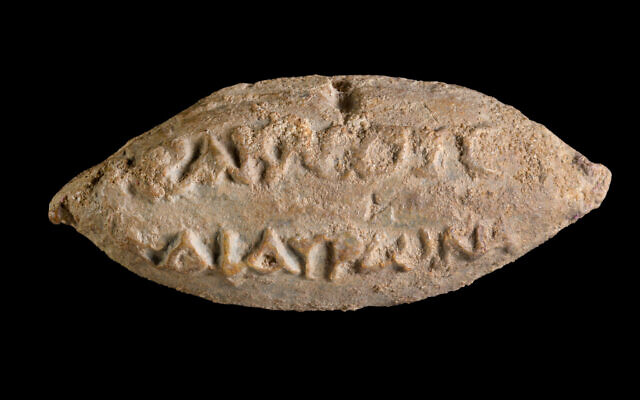
It is believed that by the end of 7,000 B.C., slingers in the Near East had transitioned from using natural stones to using carved stones or baked clay as sling projectiles. These early projectiles were typically spherical in shape and were often made by hand. Over time, as slinging techniques and technologies evolved, the shape of these projectiles also changed.
By around 3000 B.C., sling bullets had become biconical and then ovoid or egg-shaped, which made them more aerodynamic and accurate in flight. This new shape allowed slingers to increase their range and accuracy, making them even more effective on the battlefield. Additionally, around this time, lead became a popular material for sling bullets due to its density and weight. Overall, the development of sling projectiles from natural stones to uniform clay balls and then to lead biconical or ovoid shapes represents a key advancement in ancient projectile technology.
Cheeky Slingers
Another noteworthy piece of information regarding ancient sling weapon projectiles it how some of them may have been inscribed with various images or writing.
For example, the sling bullets recovered from the siege of Perusia in Etruria from 41 BC, and currently held in the museum of modern Perugia, are inscribed with Latin text. The inscriptions on these bullets typically include the name of the military leader who ordered their manufacture, such as Octavian (who later became Emperor Augustus), as well as the name of the military unit responsible for their use. These inscriptions can help to provide insight into the organization and logistics of ancient warfare.
Examples of symbols inscribed on sling weapon projectiles include a stylized lightning bolt, a snake, and a scorpion – a possibly not-so-friendly reminder of how a sling might strike without warning. Writings on sling bullets have included the name of the owning military unit or commander or might be more imaginative: “Take this”, “Ouch”, “get pregnant with this”
Below is an early Greek lead sling weapon projectile in an ovoid shape with an image of a lightning bolt on one side. The reverse side bears the inscription ” “ΔΕΞΑΙ” (Dexai) meaning ‘take that’ or ‘catch’ [6]

Whistling Sling Bullets
Some sling bullets recovered at the Brunswark Hillfort have small holes in them. These holes may have been put there to allow the projectiles to make a high-pitched whistling noise as they flew.
Burnswark is an Iron Age hillfort located in Dumfries and Galloway, Scotland. The fort was built on a natural hill and consisted of two separate areas enclosed by ditches and ramparts. It is believed to have been in use from around 200 BC to 100 AD.
In 2015, a team of archaeologists discovered a large number of sling bullets with holes in them at Burnswark. These bullets were made of clay and ranged in size from small, round pellets to larger, egg-shaped projectiles. [7]
Physics of Slings
Before we go into how to use a sling, some background on the physics and/or mechanics behind the sling weapon as well as its use should be discussed.
One of the most basic concepts of the physics of slings is that of force multiplication, which is basically the concept of leverage.
As the Greek mathematician, Archimedes famously said “Give me a lever long enough and a fulcrum on which to place it, and I shall move the world.”

Force Multiplication
The principles of a force multiplier are an important aspect of sling mechanics, as they allow the user to transfer more energy to the projectile and increase its speed and range. A force multiplier is a device that amplifies the force applied by the user, allowing them to achieve greater results with less effort.
In the case of the sling, the force multiplier is the length of the sling itself. When the user swings the sling, they apply a force to the projectile by accelerating it in a circular motion. The length of the sling allows the user to achieve a greater distance from the projectile and apply a greater force to it, which increases its speed and range.
The force multiplier effect can be described by the equation F = ma, where F is the force applied, m is the mass of the projectile, and a is the acceleration. By increasing the length of the sling, the user can increase the distance over which the force is applied, which in turn increases the acceleration of the projectile and its final speed.

Sling Weapon – Circular Motion and Conservation of Energy
The basic principle of the sling is that the user applies a force to the projectile by swinging the sling in a circular motion and then releasing it at the appropriate time. The force applied to the projectile is a combination of the centripetal force of the sling and the user’s arm, as well as the tension in the sling itself.
The physics of the sling can be analyzed using the laws of motion, specifically the principles of circular motion and conservation of energy. Circular motion occurs when an object moves in a circular path at a constant speed, and is governed by the equation F = mv²/r, where F is the centripetal force, m is the mass of the object, v is the velocity of the object, and r is the radius of the circle.
When the user swings the sling, they are applying a force that accelerates the projectile in a circular path. The velocity of the projectile increases as it moves towards the bottom of the circular path, where it is released. This increased velocity is due to the conservation of energy, which states that the total energy of a system remains constant, but can be transformed from one form to another. In the case of the sling, the user applies potential energy to the projectile by lifting it up and then transforms that potential energy into kinetic energy as the projectile is released.

The range and accuracy of the sling are dependent on a number of factors, including the weight and size of the projectile, the length of the sling, and the force applied by the user. The optimal length of the sling is typically around twice the length of the user’s arm, although this can vary depending on the user’s strength and technique. The weight and size of the projectile also affect the range and accuracy, as a heavier and more aerodynamic projectile will travel further and be more accurate than a lighter and less aerodynamic one.
Here is a good video which illustrates some of the phyics of the sling:
Double Pendulum
Some more in-depth physics of the sling may be understood by what is known in mechanics or physics as double pendulum kinetics. This involves a lot of mathematics so we have committed a more thorough analysis of the principle in this article. The interested reader may read further about this particular aspect of physics here.
How to Use a Sling Weapon
Tired of all this talk and no action? Sure you are! That is why you actually want to learn how to use a sling weapon and then get to slinging. Well, we’ve got you covered.
As the old saying goes: “a picture is worth a thousand words”. And so by this logic, a video may be worth a thousand pictures. That is why we have assembled some videos which will help the read better understand how to use a sling weapon.
Sling Weapon Speed
How fast can a sling fire its deadly projectiles? The fastest baseball pitchers can release a 5 ounce baseball at over 100 mph. However, having understood the force multiplying principles behind the sling, as well as some other physics, we can safely say that a fit and well trained slinger would be able to release a projectile much faster than this. But how fast? Of course this depends on several factors including the length of the string, weight of the bullet and the strength of the slinger. Fortunately several experiments have been conducted to establish this. Below is a video demonstrating such experimentation.
How to Make a Sling Weapon
One of the great things about slings is there relative ease of manufacture. They are also made with inexpensive and abundant materials, traditoinally these would have been plant fibers. Flax, hemp and wool were quite common. Below are some videos that may further enlighten the reader on how to make a sling weapon.
Modern Sling Weapon
Yes indeed! Slings are still being made in modern times. There are plenty of independent crafty people making this ancient weapons with a modern twist and in our current day and age.
Check out some of them here at Etsy.com!
There are also some very intriguing slings produced for the modern age by Paleotech. Check out the link below:
https://www.pixelandtimber.com/modern-throwing-sling
Thank You and God Bless
[1] “The Iliad of Homer, translated by Cowper”. Gutenberg.org. 5 August 2005. Retrieved 12 September 2010.
[2] Pritchett, W. Kendrick (1974). The Greek State at War: Part V. University of California Press. ISBN 9780520073746.
[3] Swan, David (2014), Attitudes Towards and Use of the Sling in Late Iron Age Britain, Reinvention: an International Journal of Undergraduate Research, Volume 7, Issue 2
[5] Seager Thomas, Mike (2013). Reassessing Slingstones. Artefact Services Research Papers 3. Lewes: Artefact Services.
[6] “Lead sling bullet; almond shape; a winged thunderbolt on one side and on the other, in high relief, the inscription DEXAI “Catch!””. Retrieved 30 April 2012.
[7] “Bullets, ballistas, and Burnswark – A Roman assault on a hillfort in Scotland”. Current Archeology. 1 June 2016.
